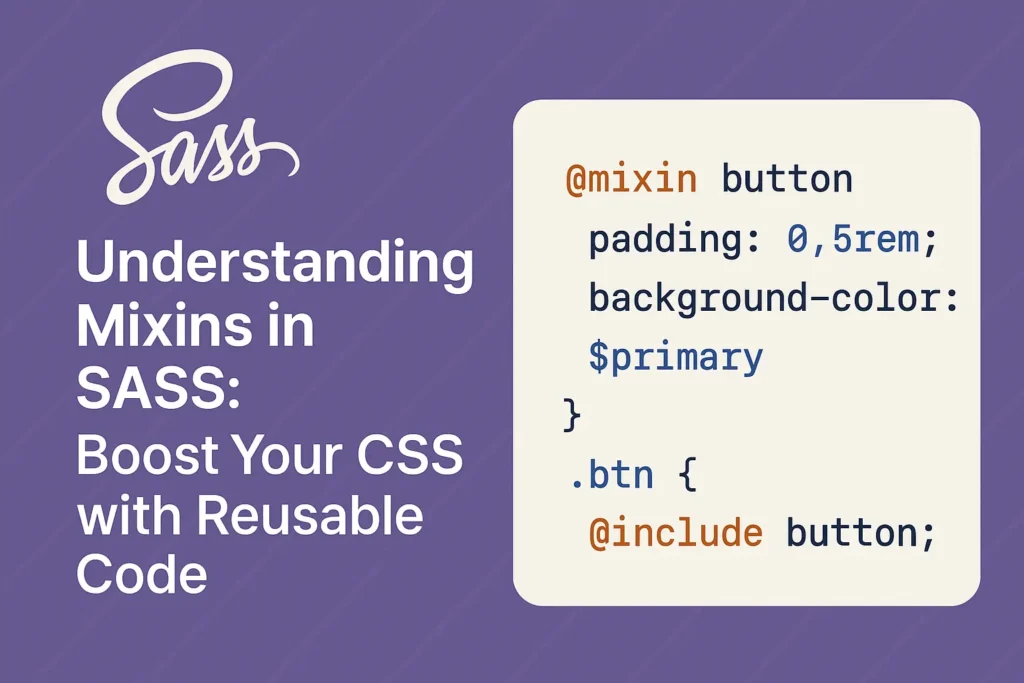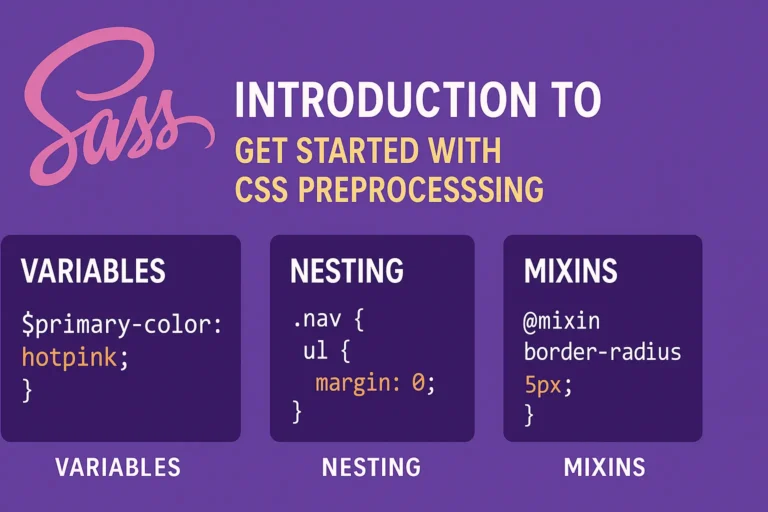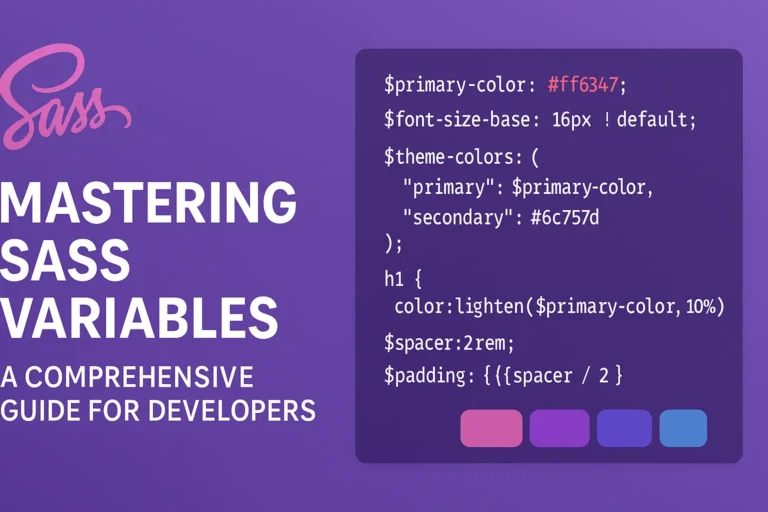To streamline the styling process and enhance code reusability, developers often turn to preprocessors like SASS (Syntactically Awesome Style Sheets). Among the myriad features that SASS offers, mixins stand out as a powerful tool for creating modular and maintainable stylesheets. In this article, we will delve into the world of mixins in SASS, exploring their creation, usage, and advanced techniques.
Understanding Mixins
Mixins in SASS allow developers to define reusable blocks of CSS code that can be included at various points within their stylesheets. Think of mixins as functions for CSS: they accept parameters, perform operations, and output CSS code wherever they are invoked. This abstraction greatly enhances code organization and reduces redundancy, leading to cleaner and more maintainable stylesheets.
Creating Mixins
Creating a mixin in SASS is straightforward. It follows the @mixin directive followed by the mixin’s name and its parameters (if any). Let’s create a simple mixin to add vendor prefixes to the transition property:
@mixin prefix-transition($duration) {
-webkit-transition: $duration;
-moz-transition: $duration;
-ms-transition: $duration;
transition: $duration;
}
In this example, $duration is a parameter that accepts the transition duration. Now, whenever we need to apply a transition with vendor prefixes, we can simply include this mixin.
Passing Arguments to Mixins
Mixins can accept arguments, making them dynamic and versatile. Let’s enhance our previous mixin to accept additional parameters for timing function and property:
@mixin prefix-transition($duration) {
-webkit-transition: $duration;
-moz-transition: $duration;
-ms-transition: $duration;
transition: $duration;
}
Now, we can customize the transition property, duration, and timing function when including this mixin:
.element {
@include prefix-transition(background-color, 0.3s, ease-in);
}
Mixin Directives
SASS provides a powerful feature called @content that allows mixins to accept nested styles. This is particularly useful when you want to apply styles to a specific element within the mixin. Let’s create a mixin for creating CSS3 buttons:
@mixin button($color) {
background-color: $color;
border: none;
border-radius: 4px;
color: white;
padding: 10px 20px;
&:hover {
background-color: darken($color, 10%);
}
@content;
}
Now, when including this mixin, you can pass custom styles for the button:
.custom-button {
@include button(blue) {
font-weight: bold;
}
}
Mixin Libraries and Extensions
As your SASS projects grow in complexity, you may find yourself reusing certain mixins across multiple projects. In such cases, it’s beneficial to organize these mixins into libraries or extensions for easy inclusion.
// mixins.scss
@mixin button($color) {
// Button mixin code...
}
// main.scss
@import 'mixins';
.custom-button {
@include button(blue);
}
By separating mixins into dedicated files and importing them as needed, you promote code reuse and maintainability across your projects.
Conclusion
Mixins in SASS are a powerful tool for writing modular and maintainable stylesheets. By encapsulating reusable CSS code and accepting dynamic parameters, mixins enable developers to streamline their styling workflow and enhance code reusability. Whether you’re creating simple vendor prefixing utilities or complex component styles, mastering mixins is essential for efficient SASS development. Start leveraging mixins in your projects today and unlock their full potential in crafting beautiful and responsive web interfaces.






